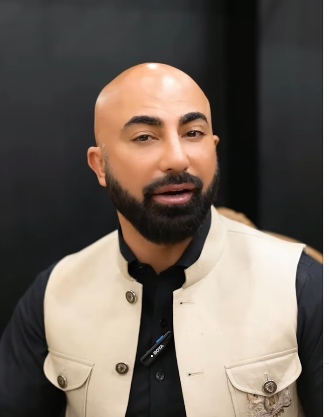The farshi shalwar, the most talked-about garment of the season, is now accessible to anyone thanks to designer HSY’s decision to share the secrets of her fit-testing process.
Nida Yasir interviewed designer Hassan Sheharyar Yasin on her Shaan-e-Suhoor show earlier this week. Areeba Habib was also a guest. During their conversation, the host questioned the designer, who absolutely shouldn’t wear a farshi shalwar. “Everyone should wear it,” was his generous response.
He reasoned that the farshi shalwar’s inclusivity made it a fashion trend that anyone could embrace. He went on to say, “Our women may come from different backgrounds, but they all have the same religion,” and that individuals typically strive for modesty while looking attractive. The farshi shalwar, in his opinion, is ideal for this since it conceals your legs’ natural curves.
Those who were previously unable to participate in that way can now, he explained.
“Wear it with a long shirt—it looks beautiful.” He said in response to the host’s valid point that not everyone looks good in short shirts, which is a common pairing for farshi shalwars.
HSY designed farshi shalwar sets for his latest collection, featuring shirts that fall 10 to 12 inches below the knee. In his opinion, the silhouette is exquisite.
He did, however, warn that the chaak’s length—a slit in the shirt—shouldn’t exceed a few inches beyond the knee. The chaak can be raised, nevertheless, for those who are overweight.
He stated that it’s shape-dependent. According to him, “the Pakistani body shape is such” that most Pakistanis have wide hips.
He suggested choosing georgette, chiffon, or light silk for the shirt’s fabric, advising against excessively embroidered materials, and preserving a lengthy chaak.
Since the shalwar calls for a heavier fabric that falls nicely, he suggested pure cotton for everyday wear. In order to make the pants fall more uniformly, HSY recommended sewing a drawstring into the painchay, or hem.
He went on to say that Chanel jackets have a chain sewn inside the seam, whichbecause of the wearer’s weight, causes the chain to fall straight. In addition, we do that. Since these methods are for the clients, he decided there was no need to keep them secret; therefore, he revealed that they help with the fall.
“Go get it made yourself and wear beautiful clothes; there are people in cities who can’t access our clothes,” he remarked, to Yasir’s bewildered laughter as he explained how to make the outfits he sells.
“Everyone is entitled to be fashionable and to look beautiful,” he declared. He made the statement, “There are [220] million people in the country, and I can’t make clothes for all of them,” before going on to say that it would be wrong of him not to teach them how to sew excellent clothes for themselves.
The most popular and costly material for formal farshi shalwars is 80g of pure raw silk; however, it may be quite pricey. HSY suggested other less expensive options, such as pre-dyed double georgette, but cautioned against dying it, saying that it wouldn’t come out right.
He recommended adding anchor embroidery in the same color as the shalwar to the hem to make it heavier, in case you want not to have the drawstring at the hem.
Style and silhouette are paramount in HSY’s take on the farshi shalwar trend, which is defined as loose-fitting rather than form-hugging.” It’s meant to be casual. “Breathing room is necessary for everyone,” he stated. He did mention one caveat, though: it should be loose-fitting all over yet snug at the shoulders.
Dressing well for the shoulders is crucial, regardless of gender, because “we are broad-shouldered in general, so it should always fit well there; otherwise, it looks slacky,” he noted.
Just like Yasir, HSY has a solution for those times when a tailor messed up the shoulder seams of an outfit. Tailors, he explained, would often measure the precise circumference of the shoulder but then add half an inch when making the sleeves. He also stressed the importance of a loose armhole, saying that once it drops, everything else will fall into place.
He said that people should be considered like hangers. Putting your garments on the hanger correctly will make them seem nice. Look at your shoulders; they’re your hangers.
He went on to say that some people sew garments that do not necessarily flatter their figures. When designing garments, “keep your body in mind,” he advised. “The way they appear in magazines may not reflect how they will look on you.”
One of the reasons for this, he said, is “fashion is a wonderful solution and a big trap. Avoid succumbing to this trap. Take inspiration and make it, keeping in mind your body shape and environment.”

Posted inUncategorized

